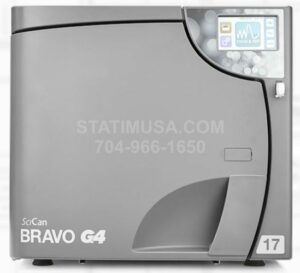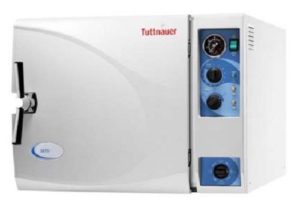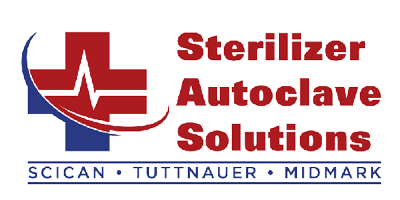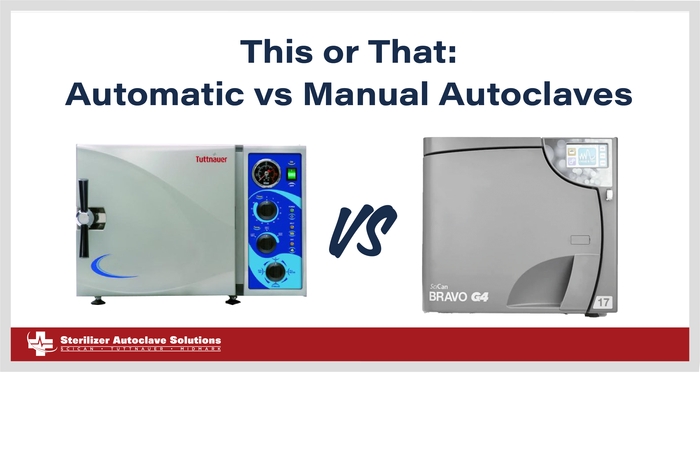This or That: Automatic vs Manual Autoclaves
Autoclaves are an essential step in the sterilization cycle, ensuring that your instruments are sterilized for packaging to be delivered to their next job…but picking one out is a job in and of itself. There are so many kinds to suit many different needs based on different factors. Whether it’s size, capacity, speed, etc, it all comes down to what you need. Now, these aren’t detrimental factors, these facts are to help you better decide what you need based on your current needs. There is no right or wrong answer. But they’re still things to take into consideration to make sure you get your money’s worth. One of these things to take into consideration is if you want a manual autoclave or an automatic autoclave.
Both have their differences that should be considered when purchasing. So in this article, we’ll help compare and contrast manuals versus automatics and help you make a more informed decision when buying your autoclave. We’ll go into detail about each kind and provide an example for each to better your understanding of them.
Automatic Autoclaves
Automatic autoclaves are, as the name suggests, automatic. Every process that would normally have to have a manual input or form of manual labor is done automatically. There are quite a few processes that are taken care of on an automatic unit. Things like cycle settings, automatic units usually let you save a preset cycle setting where all you need to do is press the button to start the cycle. The unit automatically fills with water and the cycle presses on without any other input. Even when it comes to exhausting the unit and starting the drying cycle, it exhausts and dries automatically, then notifies you when it’s done.
Automatic autoclaves are “set-and-forget” units. They don’t need the extra inputs and checks that the manual autoclaves do, making for a less detailed process. Like anything, it has its ups and downs, pros and cons.
Pros:
- Automatic functions make them time savers
- With upgraded technology, most automatic sport user-friendly features
- Automatic autoclaves are programmed to detect faults and failures faster than we can
Cons:
- Automatic autoclaves are significantly more expensive due to their technology.
- Higher repair cost
Example of an Automatic Autoclave

A good example of an automatic autoclave is the SciCan Bravo G4. This unit is one of SciCan’s best and boasts a number of incredible features for an automatic unit. The Bravo G4 is the next in SciCan’s line of incredible G4 equipped autoclaves. Bringing in quality-of-life improvements that maybe you didn’t think you needed. A sleek door design wraps around the Bravo G4’s LED display. And sporting the Bravo’s standard rounded edge chamber door. And with a nice variety of sizes to choose from, we’re sure you’ll find something you like. Like spacious interior of the 17L (17 liter) or the 22L (22 liter) sizes the unit comes in. Or the other incredible benefits of these units like:
- A sleek, modern exterior bringing quality of life improvements to the build.
- The intuitive touchscreen interface using the easy-to-navigate G4 interface.
- Reliability
- The SciCan Bravo G4 units utilize the pre/post vacuum cycle of Class B.
- Fast unwrapped cycle times as fast as 33 minutes.
- The upgrade to G4 technology means this machine takes advantage of many useful features for things like data, profiles, Wi-Fi coverage and more.
- These units feature a new “Delayed Start” feature, able to schedule a cycle whenever you need. Even overnight!
The SciCan Bravo G4 is available here on our site.
Manual Autoclaves
Manual autoclave, as the name suggests, are autoclaves that require manual labor and inputs to fully complete a cycle. From start to finish, every input is done manually. Setting the fill position, loading the unit, locking the door, setting the cycle parameters, exhausting and even drying. All of it done with the help of the best tools at your disposal, your hands. Now, on the outside, manual units automatically seem detrimental to the practice and not at all advantageous. But that’s simply not true. Like any kind of autoclave, the pros and cons are measures to use when selecting an autoclave based on your specific needs. There’s no right or wrong, it’s all about what you need.
Manual autoclaves have a more detailed and strict process to follow to ensure everything works out. Here are some of the pros and cons of manual autoclaves:
Pros:
- These units are significantly cheaper due to the manual processing
- Manual autoclaves have lower repair costs
Cons:
- Manual processing can be very time consuming
- There are less safety features with technology not providing checks and balances
- There are no monitoring controls
Example of a Manual Autoclave

A good example of a manual autoclave is the Tuttnauer 3870M. The largest manual table top autoclave we carry. Its size indicates a larger capacity, perfect for multi-doctor practices, clinics or surgery centers. The 15” x 30” chamber accommodates longer instruments or a large number of small instruments. Capacity for 15 full size IMS cassettes. Other features of the Tuttnauer 3870M include:
- Automatic shut off at the end of both the sterilization and dry cycles.
- A long life electro polished chamber and door.
- Double safety locking device prevents door from opening while chamber is pressurized.
- Drain valve is located on the front, allowing for quick and easy draining of water reservoir.
- Dual safety thermostat to protect against overheating.
- International certifications
- Supplied with a 3 shelf stand that measures 26 inches wide x 33 inches deep x 34 inches high
- 1 year parts and labor warranty
The Tuttnauer 3870M is available here on our site.
Final Thoughts
Understanding the differences between automatic and manual autoclaves can help better determine the appropriate type of unit for you. While the statistics may seem to skew one way or the other, it’s important to remember that one is not better than the other. Each one has its own advantages and drawbacks based on your practice’s day-to-day work. What truly matters is finding the autoclave that best meets the needs of your practice. Things like sterilization requirements, space limitations and budget are all things to be considered. By considering these factors and conducting thorough research, you can select the autoclave that will offer the proper efficiency and reliability you need.
If you’d like to find other automatic and manual autoclaves, you can browse our vast autoclave selection here on our website. Or, if you have any questions about automatic and manual autoclaves, or anything else, call us at 704-966-1650, or you can find us using the links to our other programs below.
As always if you have any questions about this process or anything else please feel free to contact us and take advantage of our “FREE TECH SUPPORT.”
We also offer FREE VIRTUAL TECH SUPPORT to “See and Talk” with a “Real Time Live Technician” for any problems you may be in need of help with.
You can also use our “FREE MAINTENANCE PROGRAM”. Take the guesswork and worrying about what unit is due for maintenance and which maintenance cycle it is time for. We will keep track of all your autoclaves and let you know when it’s time for anything.


